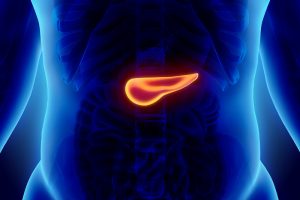 Twenty years ago, getting a pancreatic cancer diagnosis was very often devastating. The cancer usually wasn’t caught until later stages, partly because the pancreas is tucked behind the stomach, making it hard to detect tumors. Plus, some of the warning signs — abdominal discomfort, back pain, unintended weight loss and fatigue — are easy to overlook or attribute to other conditions. And they often arise late in the game.
Twenty years ago, getting a pancreatic cancer diagnosis was very often devastating. The cancer usually wasn’t caught until later stages, partly because the pancreas is tucked behind the stomach, making it hard to detect tumors. Plus, some of the warning signs — abdominal discomfort, back pain, unintended weight loss and fatigue — are easy to overlook or attribute to other conditions. And they often arise late in the game.
The five-year survival rate for this kind of cancer was around 4 percent. For treatment, doctors were able to offer patients only standard chemotherapy, radiation and/or a risky surgery.
Today, however, the five-year survival rate for pancreatic cancer has more than doubled. If the disease is caught early and the tumor is small and confined to the pancreas, the survival rate is around 40 percent.
A surge in research funding is partly responsible for this good news. For example, at the National Cancer Institute (NCI), money for pancreatic cancer research rose from $17 million in 1999 to more than $182 million in 2018. Funding by other agencies and organizations has made similar leaps.
With stronger support, pancreatic cancer research is making huge advances. Scientists are developing new ways to screen for this cancer so that it can be caught earlier. Medical experts are also engineering new drugs to treat the cancer and finding innovative ways to repurpose existing therapies and deliver more focused radiation to tumors to shrink them, which can make removing’s them easier.
This article continues on to talk about the great promise in targeted therapy, using repurposed drugs, guided radiation therapy, increased AI technology to read scans and using screening to detect cancer early. All of which could not happen without the support of nonprofits and its generous donors. To read the full artcile, visit AARP’s website.
